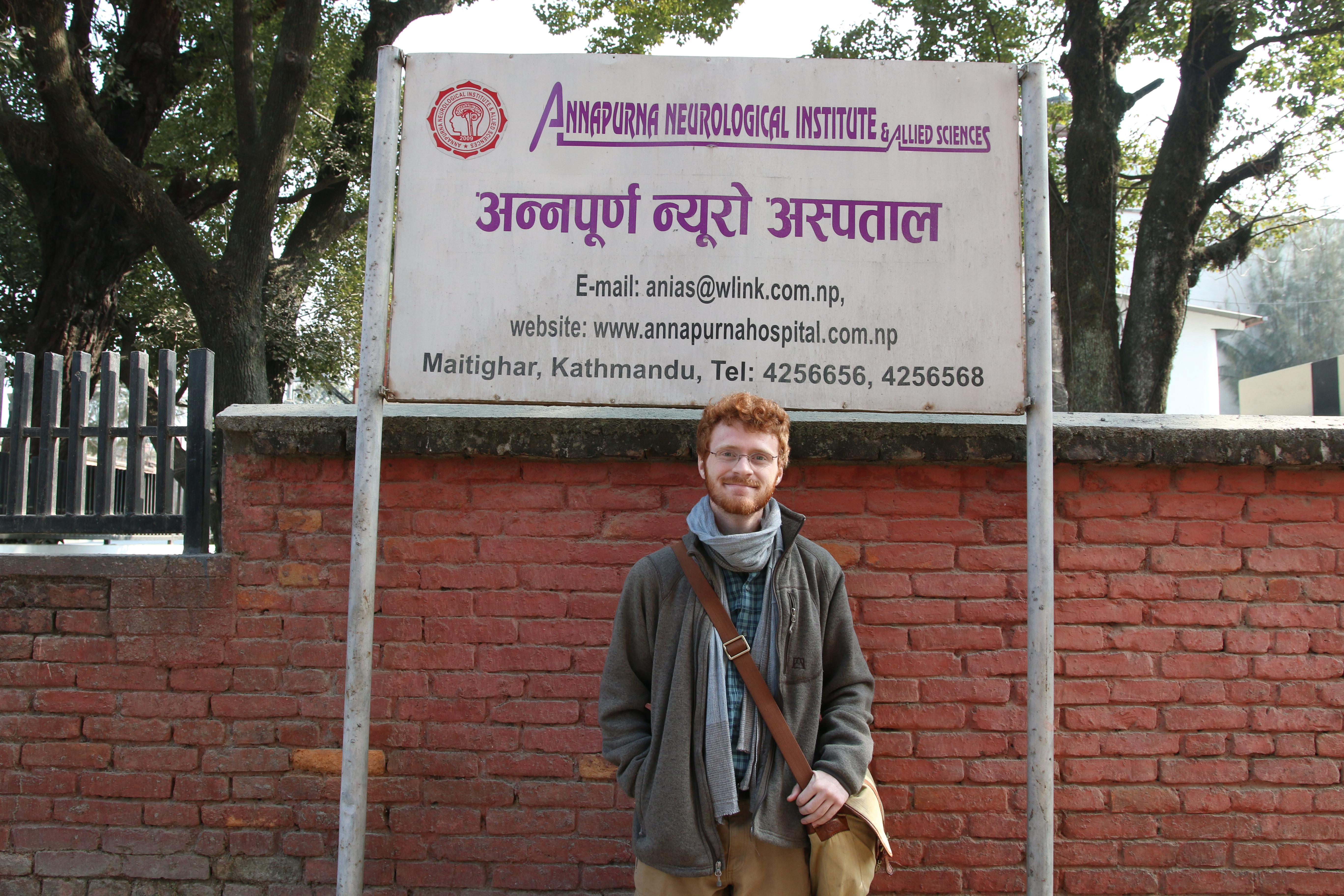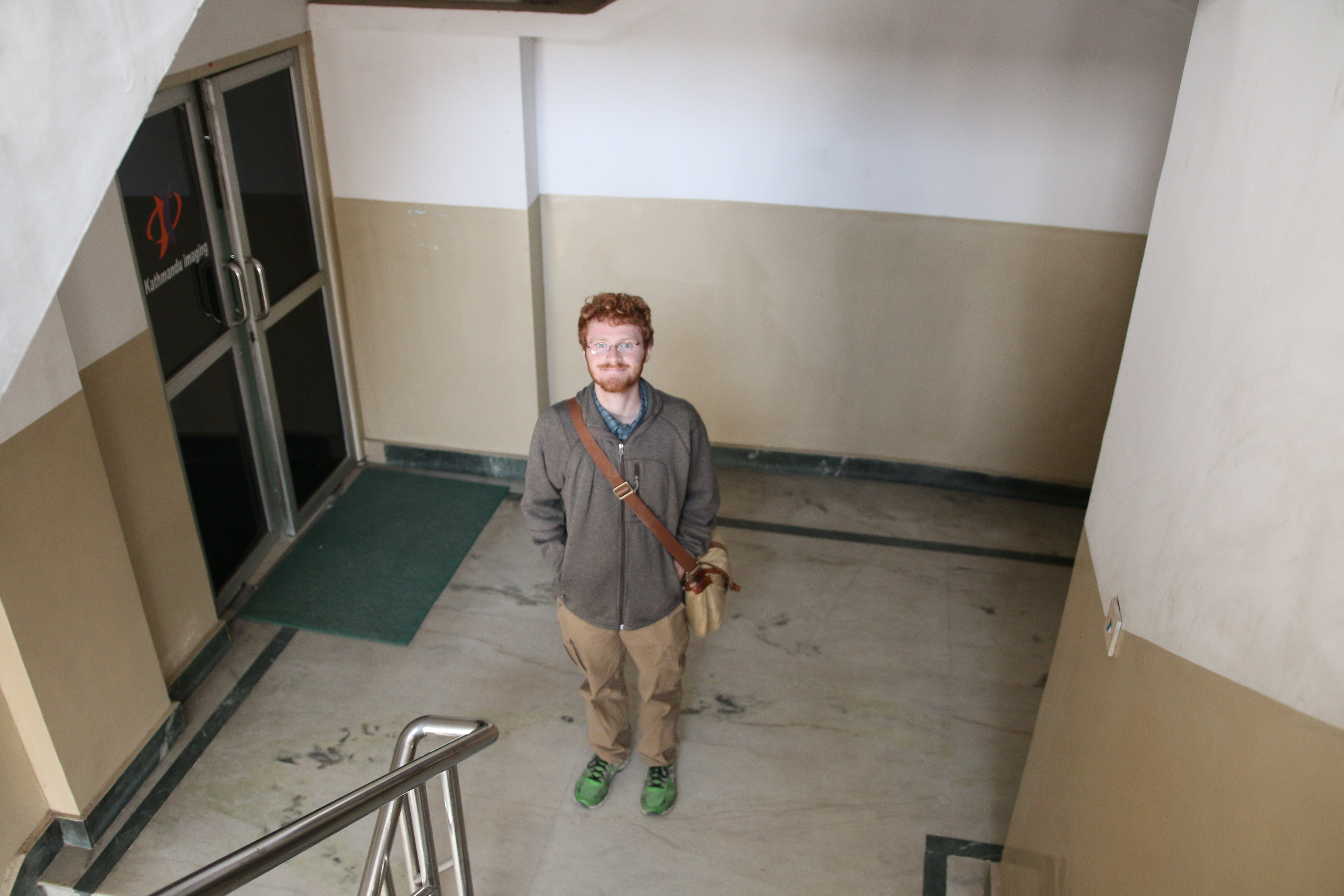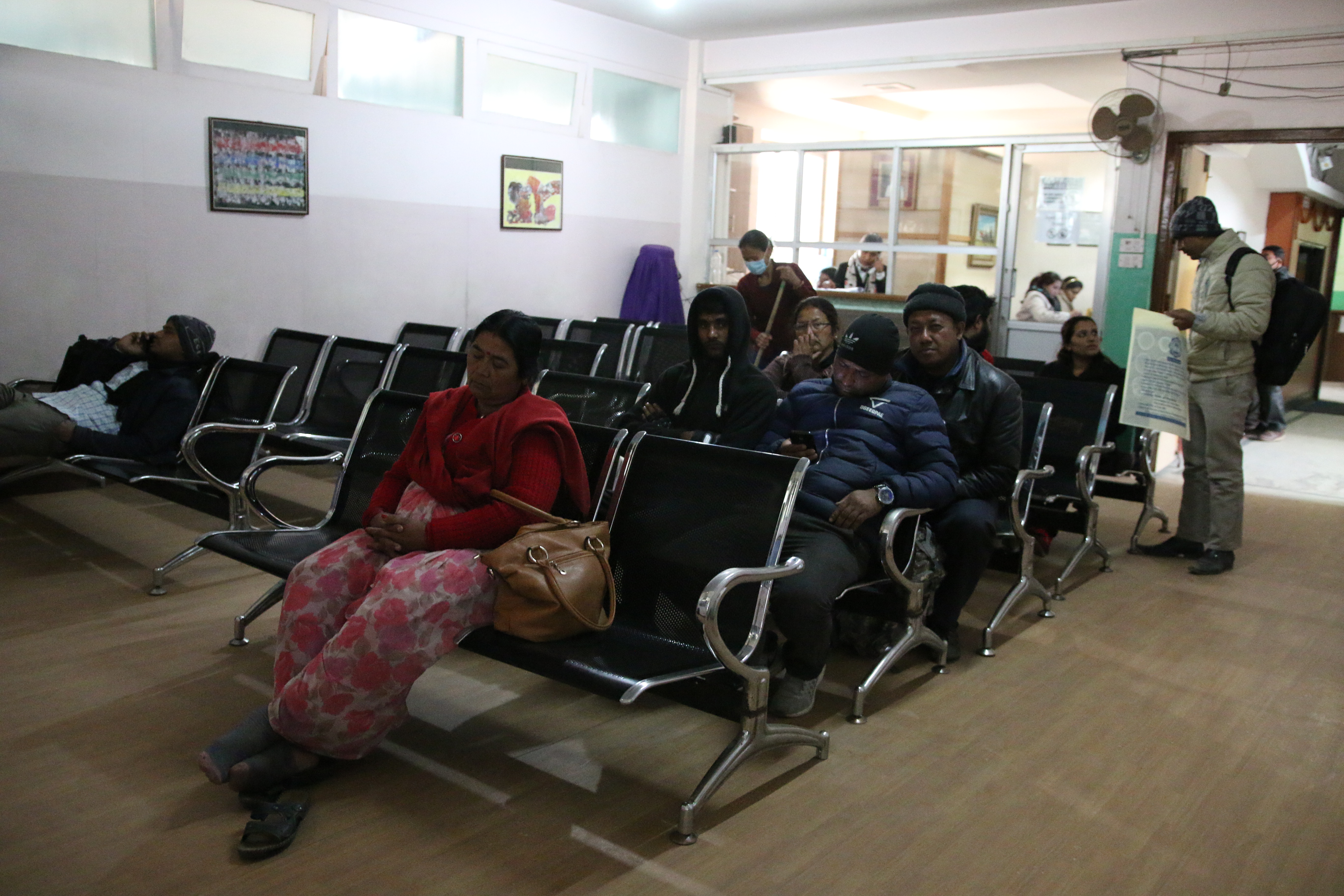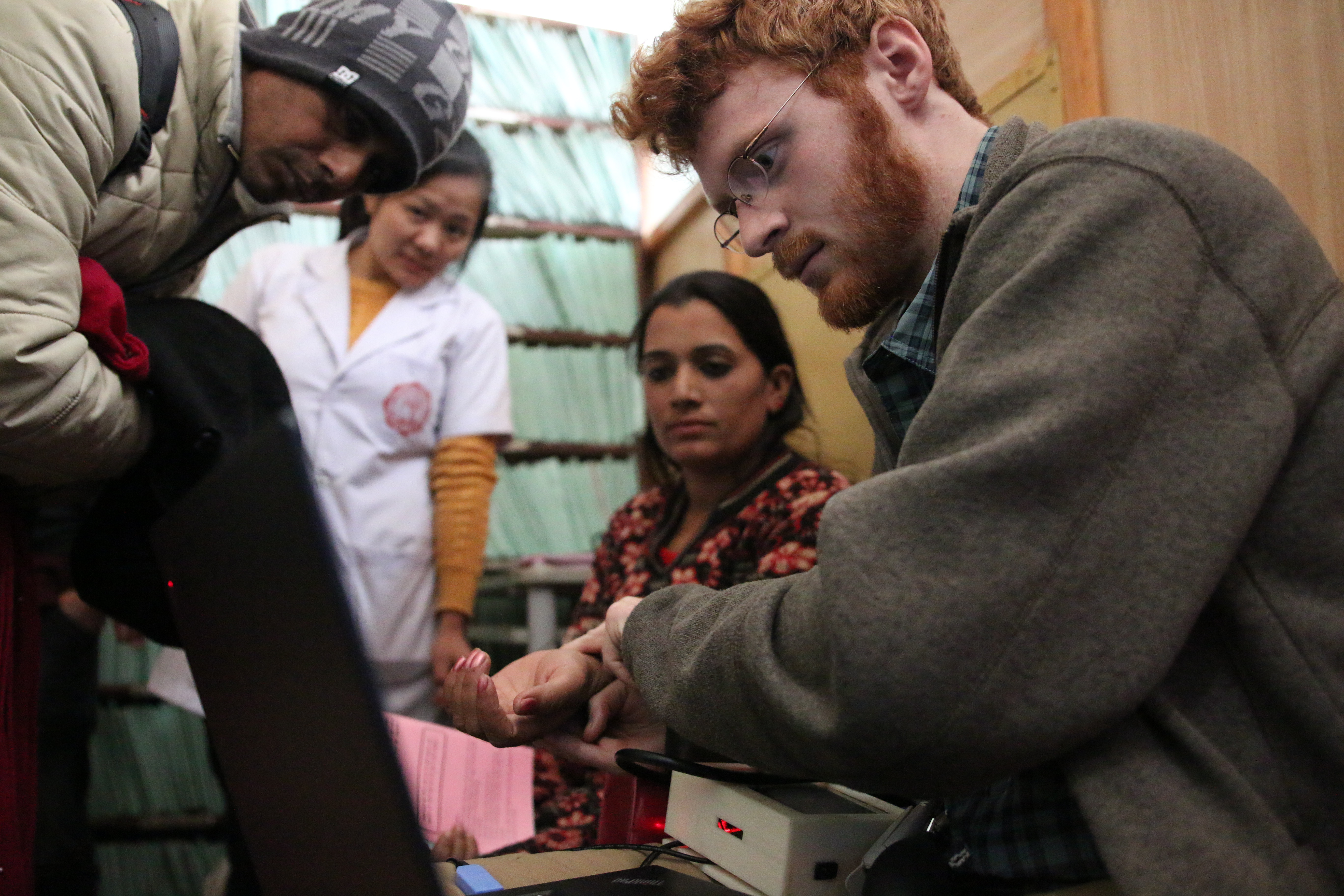Annapurna Neurological Institute

The final stop in our preclinical trials for FreePulse was Annapurna Neurological Institute, a private hospital in the heart of Kathmandu. Annapurna Neuro was a distinct shift from the hospitals we had been visiting earlier in our trip: it is a towering five-story building with several specialized wards, a wide range of medical technologies at its disposal, and a healthy funding system. Instead of a general treatment hospital like Amppipal or Okhaldhunga, Annapurna Neuro specializes in (as the name suggests) neurological conditions and operations, making its patient population much more focused. Even the aesthetics of the building suggests a thriving business, with marble-floored hallways and comfortable waiting rooms.

While it certainly wasn't the typical hospital for which FreePulse was targeted, it was a crucial stop in our preclinical trials because it afforded the singular opportunity to talk with Dr. Basant Pant, the brilliant and innovative mind behind Annapurna Neuro. Dr. Pant is a gifted neurosurgeon-- in fact, he is one of only two practicing MD-PhDs in Nepal-- but some of his most amazing contributions to the hospital have been his investment and research into low-cost replacements to conventional medical equipment using locally sourced materials. Not only that, but Dr. Pant also has experience working in disaster relief-- he offered his expert neurosurgical services to victims of the catastrophic 2015 earthquake, helping Nepalis who otherwise would not have had a chance at any kind of appropriate medical care. Given his extensive experience in the field, I didn't want to pass up the opportunity to show him FreePulse and hear his feedback.
Meeting Dr. Pant
Upon arriving at the hospital, we were whisked upstairs to the neurosurgery ward to find Dr. Pant prepping for an operation. Pausing his pre-surgery duties (he was ahead of schedule), he introduced himself and sat us down on a waiting room couch. He was dressed in all-green scrubs and spoke with a business-like and brisk tone, but his eyes were sharp and curious. He had the same the kind of look you begin to recognize in inventive and adventurous individuals if you hang around them long enough.
From the outset, I was struck by Dr. Pant's larger-than-life personality. He was at once both inviting and investigative, listening intently to everything I had to say and carefully constructing his responses. He had a well-deserved confidence in his words and actions and exuded the kind of mental restraint and cool analysis that comes from a lifetime of performing life-or-death neurosurgical operations. As I introduced FreePulse to him and demonstrated the prototype, he absorbed every detail and tested the device himself.
Dr. Pant was very receptive to FreePulse, seeing it as having potential use both in his hospital as well as mobile surgical units and lower-income hospitals. He was excited about the idea of having a lower-cost alternative to a traditionally expensive piece of medical equipment; as far as he was concerned, providing quality care at a lower cost meant that he could provide care to more patients. Lowering equipment costs was something Dr. Pant believed very strongly in, he told us, since he operates a for-profit hospital and any extra equipment costs would inevitably be passed down to the patient.

The waiting room of Annapurna Neuro. Dr. Pant's hospital offered more amenities to patients and their families due to its for-profit structuring.
The Power of Profitability
At first, I was confused by an apparent contradiction. I knew about Dr. Pant's humanitarian work in earthquake relief and his dedication to the people of Nepal, but this seemed at odds with the enterprising, for-profit hospital I was currently sitting in. How did these two seemingly disparate visions of health care agree with each other? If Dr. Pant's intentions were to provide quality neurological medical care to all Nepalis, then why would he not operate his hospital as a non-profit venture? After spending time with Dr. Pant and discussing his opinion of FreePulse, his vision for the hospital, and his views on healthcare in general, I began to understand more clearly where he was coming from.
Dr. Pant operates on the principle that the chief way to help people is by providing a sustainable service-- and implicit in that principle is the belief that depending on outside donations and goodwill is not a sustainable enterprise. It was because of this stance that Dr. Pant told us quite definitively, "I do not believe in nonprofits." While it is perhaps a startling statement for those of us who have worked in nonprofit and volunteer capacities before (myself included), I can say that my experience working in hospitals in Rwanda and Nepal have allowed me to understand the motivation behind that statement. Sustainability is the most important factor to making a lasting improvement to a hospital, and it is also virtually impossible to achieve through nonprofit initiatives alone. Creating a sustainable business model, on the other hand, incentivizes growth-- in other words, the biggest power of profitability is sustainability.
Reliability Before Certification
To drive home this point, Dr. Pant then proceeded to tell us the story of a young engineer from India who had developed a low-cost neurosurgical navigation unit-- a device that shows neurosurgeons where they are in the brain while performing an operation. This is a crucial piece of equipment with little room for error, Dr. Pant told us, and so when a relatively unknown engineer came up with a design for a low-cost unit, nobody was willing to test it. Dr. Pant met the engineer and conducted performance tests of the device outside of the clinic, and found that it outperformed commercial equipment in almost every aspect. After exhaustively evaluating the device, he was proud to tell us that he is now using it as his primary navigation unit in surgery.
The point of this story was to drill down two crucial criteria necessary for a low-cost medical device to succeed where it matters-- in the clinic. Firstly, in a paraphrase of Dr. Pant's words, "certification of a device does not matter nearly as much as the device consistently performing the way it should. If it works better than other equipment, I will use it." Reliability and accuracy of performance are crucial to a device being adopted in a clinical context. However, Dr. Pant's second point was that a device must be equal parts reliable and cost-effective in order for it to actually provide effective care to the patients it is intended for.
It was a whirlwind meeting, and as soon as we shook hands, Dr. Pant leaped back into preparing for surgery. He was performing a very delicate pediatric brain tumor removal that day, he told us, and the family had come directly to Annapurna Neuro for the operation. Dr. Pant's reputation as the foremost neurosurgical authority precedes him in the Nepali medical community, and as we said goodbye and exited the surgery ward, I was confident that family was in the best possible hands. It is entirely possible that without the effective low-cost medical equipment Dr. Pant champions, that family would have not been able to afford the operation. Seeing Dr. Pant's dedication to patients and providing accessible health care in an economically sustainable way was a truly incredible way to close out our time in Nepal.
